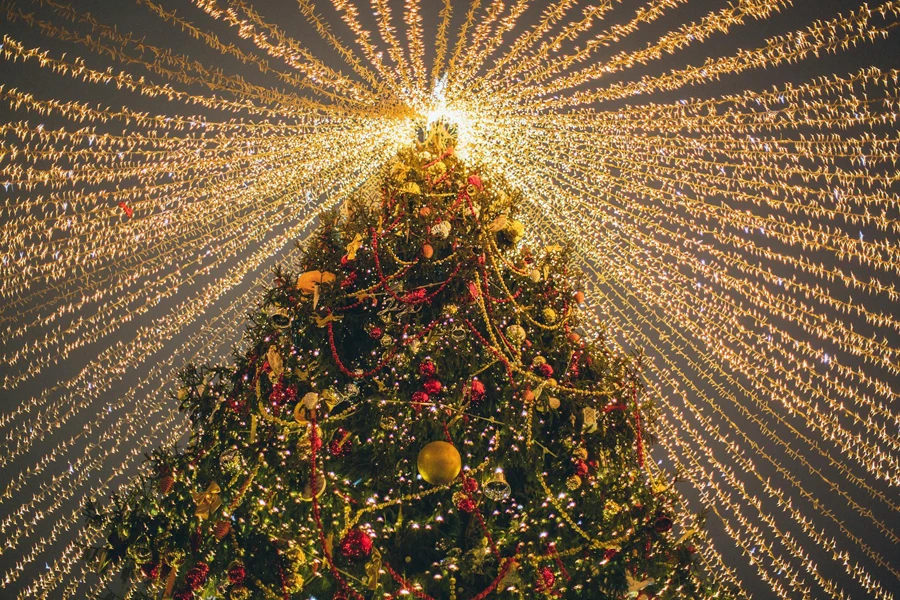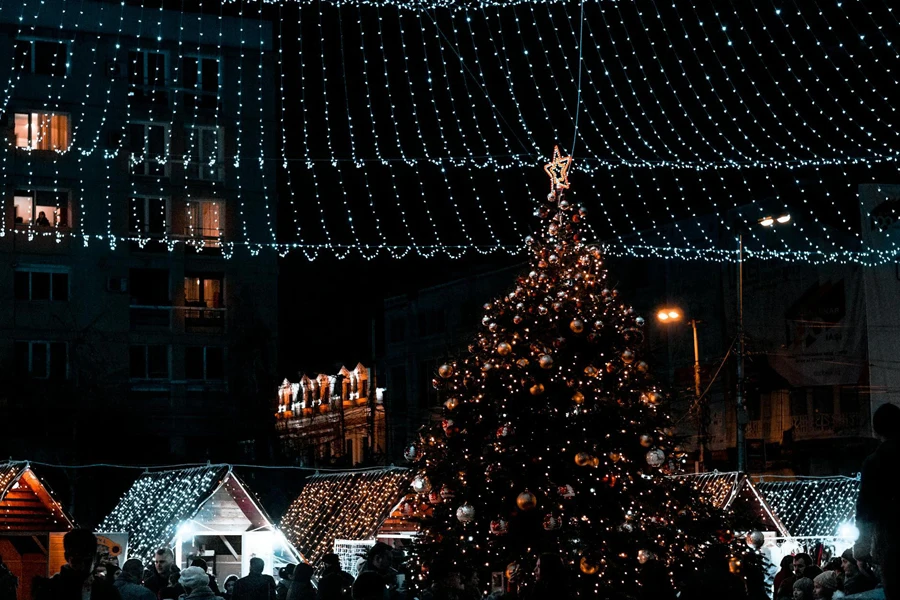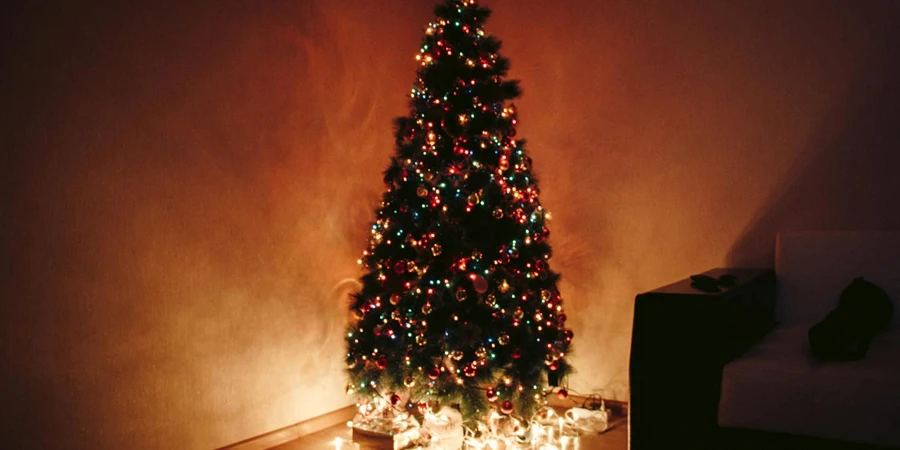Table of Contents
● Introduction
● Market overview
● Key technology and design innovations
● Top-selling models driving market trends
● Conclusion
Introduction
Selecting the right Christmas tree has become increasingly significant, reflecting broader market trends and evolving consumer preferences. As the Christmas tree market expands, understanding the nuances of market scale, growth, and consumer behavior becomes crucial for making informed choices. Innovations in tree technology and design play a pivotal role in driving consumer demand, influencing both live and artificial tree sales. Today’s top-selling Christmas trees not only align with aesthetic and practical considerations but also cater to environmental consciousness. For businesses and consumers alike, the choice of a Christmas tree is more than a festive tradition; it’s a decision that echoes market trends and personal values.

Market overview
The Christmas tree market is experiencing robust growth, evidenced by its projected expansion from USD 5.66 billion in 2022 to USD 7.94 billion by 2030, marking a compound annual growth rate (CAGR) of 4.33%. This growth is driven by increasing consumer interest in both live and artificial trees, reflecting evolving tastes that favor aesthetic appeal and durability. Consumers are increasingly drawn to products that not only resonate with traditional festive values but also embrace modern demands for longevity and style. Additionally, there is a pronounced trend towards sustainability, with a growing segment of the market opting for environmentally friendly and sustainably sourced trees. According to a report by Introspective Market Research, this shift is part of a broader consumer movement towards more responsible consumption, significantly influencing market offerings.
Recent shifts in consumer preferences are noticeably reshaping the dynamics of the Christmas tree market, which continues to adapt to these evolving demands with a sustained CAGR of 4.33%. For example, in the United States alone, it is estimated that between 25-30 million real Christmas trees are sold each year, sourced from over 142,000 hectares dedicated to their cultivation. These figures underscore the significant impact of consumer choices on market trends. Additionally, there are approximately 350 million real Christmas trees currently being grown, highlighting the industry’s response to increasing demand for eco-friendly options. This response is pivotal, as it not only meets the market’s need for traditional and aesthetic values but also aligns with the growing consumer emphasis on environmental sustainability. Such market insights, drawn from comprehensive studies by Introspective Market Research, underscore the critical role of innovation and sustainability in driving the future trajectory of the Christmas tree industry.

Key technology and design innovations
Sustainable materials in artificial trees
Material advancements in artificial Christmas trees have greatly emphasized sustainability, aligning with growing consumer awareness around environmental impact. Manufacturers are incorporating recycled plastics and biodegradable materials, which help minimize waste and reduce the carbon footprint associated with production and disposal. These materials not only replicate the natural beauty and resilience of traditional trees but also appeal to eco-conscious consumers looking to maintain environmental responsibility during the holiday season. As a result, these sustainable options are becoming more prevalent in the market, influencing other manufacturers to follow suit and innovate further in the use of environmentally friendly materials.
Needle retention technology in live trees
Needle retention technology is transforming the live Christmas tree market by addressing one of the most common complaints: needle shedding. Advances in this area include both genetic enhancements that produce trees inherently better at retaining their needles and post-harvest treatments that extend needle life. These technologies significantly reduce the maintenance required to keep the trees looking fresh throughout the holiday season, enhancing consumer satisfaction. Improved needle retention not only makes trees more appealing by maintaining their lush, full appearance longer but also simplifies cleanup, making live trees a more convenient option for busy households.
Aesthetic enhancements through technology
Technological advancements are driving aesthetic enhancements in Christmas trees, making them more appealing and versatile. The integration of LED lighting technology, for instance, allows for energy-efficient and customizable lighting options that can be adjusted to fit any mood or theme with just a few clicks. Additionally, newer models of artificial trees feature realistic branch textures and color gradients, thanks to advanced manufacturing techniques that pay close attention to detail. These aesthetic improvements not only increase the tree’s visual appeal but also enhance the overall festive experience, providing consumers with a range of options that suit any decorating style.
Structural improvements for safety and durability
Recent structural innovations in Christmas trees focus on improving both safety and durability. Enhanced base designs and branch reinforcements help stabilize the tree, preventing tipping and making it safer for homes with pets and children. These improvements are particularly important as consumers increasingly opt for larger, more elaborately decorated trees. Additionally, advancements in materials used for the tree structure itself, such as stronger metals and more durable plastics, ensure that Christmas trees can withstand the weight of heavier ornaments and maintain their form over many seasons, offering better long-term value.
Market impact of technological innovations
The cumulative impact of these technological innovations in Christmas trees is reshaping market trends and consumer expectations. As trees become more durable, aesthetically pleasing, and environmentally sustainable, they appeal to a broader audience. This shift is prompting both growers and manufacturers to adopt new technologies and sustainable practices more rapidly, setting new standards in the industry. These changes are not only influencing consumer purchase decisions but are also driving competitive dynamics in the market, as companies strive to offer products that meet the evolving demands for quality, convenience, and sustainability in holiday decor.

Top-selling models driving market trends
Fraser fir attributes
The Fraser Fir remains a top choice among live Christmas trees, largely due to its quintessential characteristics that embody the traditional Christmas spirit. This species is celebrated for its distinctive, balsamic fragrance which fills the room with a nostalgic aroma reminiscent of the holiday season. Its exceptional needle retention means the tree looks vibrant and fresh throughout December, which is crucial for maintaining its aesthetic appeal during long holiday celebrations. Furthermore, the Fraser Fir’s branches are not only strong but also evenly spaced, allowing for easy and secure placement of ornaments, from lightweight tinsel to heavier heirloom decorations. This combination of visual appeal and functional practicality makes the Fraser Fir a staple in homes seeking a traditional holiday experience.
Advantages of the nordmann fir
The Nordmann Fir is particularly valued for its user-friendly characteristics, making it suitable for family environments. Unlike other varieties, its needles are soft and blunt, ensuring a safer environment for children and pets who might come into contact with the tree. The low needle drop rate of the Nordmann Fir is also a significant advantage, as it requires less maintenance and minimal daily cleanup, keeping living spaces tidy with little effort. Additionally, the dense foliage and rich green color of the Nordmann Fir remain intact throughout the season, providing a lush backdrop for both simple and elaborate decorations. These features collectively make the Nordmann Fir a favored choice for households prioritizing ease and safety without sacrificing beauty.
Trend toward hyper-realistic artificial trees
The shift towards hyper-realistic artificial Christmas trees marks a significant trend in the market, driven by technological advancements in manufacturing. These trees are meticulously designed to replicate the fine details of natural trees, including vein patterns on the needles and subtle color variations in the foliage. Innovations such as 3D modeling and high-quality materials allow these trees to emulate the texture and flexibility of real branches, enhancing their natural appearance. The appeal of these hyper-realistic models lies in their maintenance-free nature, offering the beauty of traditional trees without the inherent challenges like watering and needle cleanup. This convenience, coupled with their lifelike appearance, makes hyper-realistic artificial trees increasingly popular among modern consumers.
Growing demand for eco-friendly Christmas trees
The trend towards eco-friendly Christmas trees is accelerating, with both consumers and manufacturers placing a higher emphasis on environmental sustainability. This shift has led to an increase in the production of artificial trees made from recycled plastics and other sustainable materials that are less harmful to the environment. Simultaneously, live tree cultivators are adopting organic farming techniques, reducing the use of chemical pesticides and fertilizers, and implementing tree recycling programs post-holiday season. These eco-friendly practices not only appeal to environmentally conscious buyers but also contribute to a broader corporate responsibility agenda, reducing the overall environmental footprint of holiday decorations.
Consumer-driven market evolution in Christmas trees
As consumer preferences evolve, the Christmas tree market continues to adapt, introducing innovations that cater to demands for sustainability, realism, and convenience. This consumer-driven evolution is shaping the strategies of producers and retailers who are now focusing on developing products that align with ethical consumption patterns. The growing preference for hyper-realistic and eco-friendly trees is a testament to the changing market dynamics, where environmental concerns and ease of use play pivotal roles. This trend not only influences the types of products available but also encourages ongoing research and development in the sector, ensuring that future holiday seasons will continue to see new and improved Christmas tree options.

Conclusion
The Christmas tree market has demonstrated significant growth and innovation, driven by evolving consumer preferences for aesthetics, practicality, and sustainability. Key findings indicate a robust expansion in market size, projected to reach USD 7.94 billion by 2030, with a notable shift towards both high-quality artificial trees and eco-friendly options. Technological advancements have enabled the creation of hyper-realistic artificial trees that meet consumer demands for convenience and visual appeal, while innovations in sustainable materials cater to an increasing environmental consciousness among consumers.
Aligning tree selection with these current trends is crucial for maximizing both aesthetic and economic value. For businesses and consumers alike, choosing a Christmas tree that reflects these evolving preferences can enhance holiday experiences and support sustainable practices. As the market continues to adapt to these trends, the importance of selecting trees that are not only visually appealing but also environmentally responsible will play a pivotal role in shaping purchasing decisions and influencing future market developments.




